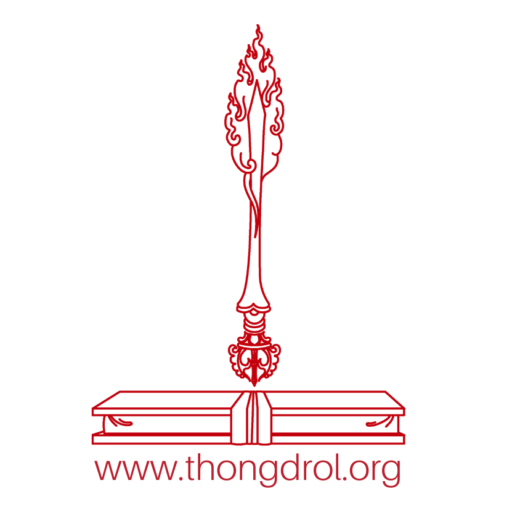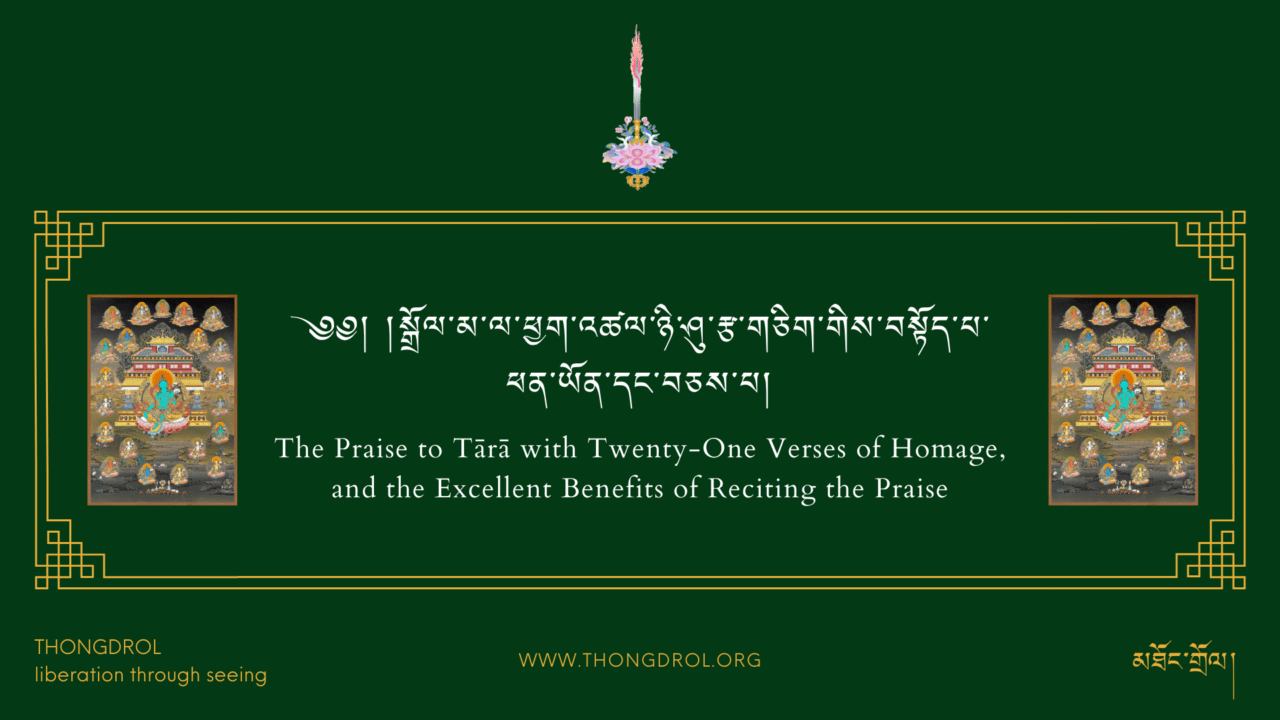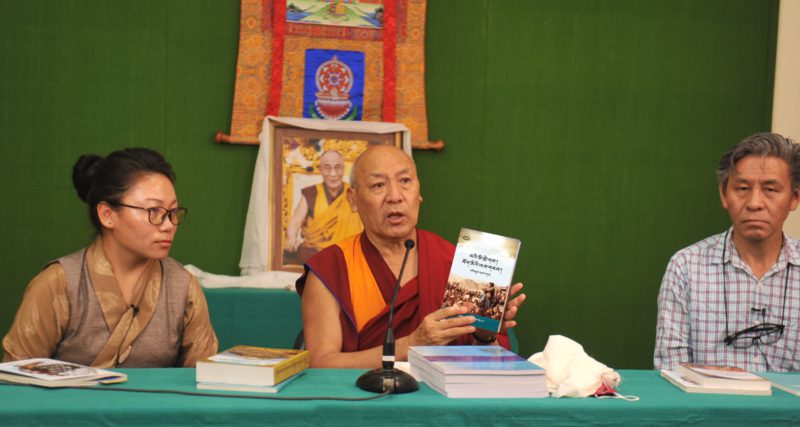༄༅། །སྒྲོལ་མ་ལ་ཕྱག་འཚལ་ཉི་ཤུ་རྩ་གཅིག་གིས་བསྟོད་པ་ཕན་ཡོན་དང་བཅས་པ།
The Praise to Tārā with Twenty-One Verses of Homage, and the Excellent Benefits of Reciting the Praise
Tara (སྒྲོལ་མ, Dölma), also known as Jetsun Dölma appears as a female bodhisattva in Mahayana Buddhism, and as a female Buddha in Vajrayana Buddhism. She is known as the “mother of liberation”, and represents the virtues of success in work and achievements. Tārā is a meditation deity revered by practitioners of the Tibetan branch of Vajrayana Buddhism to develop certain inner qualities and to understand outer, inner and secret teachings such as karuṇā (compassion), mettā (loving-kindness), and shunyata (emptiness). Tārā may more properly be understood as different aspects of the same quality, as bodhisattvas are often considered personifications of Buddhist methods. Within Tibetan Buddhism Tārā is regarded as a bodhisattva of compassion and action. She is the female aspect of Avalokiteśvara and in some origin stories she comes from his tears: “Then at last Avalokiteshvara arrived at the summit of Marpori, the ‘Red Hill’, in Lhasa. Gazing out, he perceived that the lake on Otang, the ‘Plain of Milk’, resembled the Hell of Ceaseless Torment. Myriad beings were undergoing the agonies of boiling, burning, hunger, thirst, yet they never perished, sending forth hideous cries of anguish all the while. When Avalokiteshvara saw this, tears sprang to his eyes. A teardrop from his right eye fell to the plain and became the reverend Bhrikuti, who declared: ‘Child of your lineage! As you are striving for the sake of sentient beings in the Land of Snows, intercede in their suffering, and I shall be your companion in this endeavour!’ Bhrikuti was then reabsorbed into Avalokiteshvara’s right eye, and was reborn in a later life as the Nepalese princess Tritsun. A teardrop from his left eye fell upon the plain and became the reverend Tara. She also declared, ‘Child of your lineage! As you are striving for the sake of sentient beings in the Land of Snows, intercede in their suffering, and I shall be your companion in this endeavor!’ Tārā was then reabsorbed into Avalokiteshvara’s left eye.” Tārā manifests in many different forms. In Tibet, these forms included Green Tārā’s manifestation as the Nepalese Princess (Bhrikuti), and White Tārā’s manifestation as the Chinese princess Kongjo (Princess Wencheng). Tārā is also known as a saviouress, as a heavenly deity who hears the cries of beings experiencing misery in saṃsāra.
Praises to the 21 Tara & Benefits of its Recitation (PDF)



